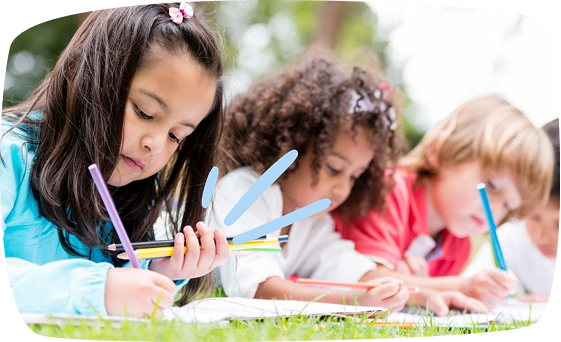Discover effective and enjoyable games to help 5-year-olds develop the key skills needed for starting Grade 1. Activities like threading beads improve fine motor skills essential for writing, while memory games strengthen visual recognition and concentration. Spatial awareness games teach concepts like left and right, making it easier for children to understand letter directions and follow instructions. These playful exercises not only prepare kids academically but also boost their confidence and independence as they get ready for primary school.
What are the best games for 5-year-olds? At age 5, play is essential because it helps children develop the skills they’ll need for starting grade 1. Here are 25 games for boys and girls aged 5, perfect for indoor or outdoor play, that support learning through fun.
Think simple, hands-on activities like making pasta necklaces to train little fingers, or playing memory with DIY cards made out of cardboard. You can tell stories together, taking turns to add to the plot, or help your child spot what’s missing in a drawing — like a house without a roof or a face without a nose. These games aren’t about pressure or perfection. They’re about laughing together, building confidence, and quietly preparing your child for the first year of school.
Games to Help 5-Year-Olds Prepare for School
Through play, children naturally develop skills they’ll use in school. For instance, recognizing letters becomes easier for kids who can spot differences and similarities in shapes. Telling the difference between “b” and “d” is simpler for those who understand left from right. Writing is easier for children who’ve had experience handling crayons and drawing on paper. These foundational skills – or early learning skills – are best developed through engaging activities.
So what kinds of games should they play? You don’t need fancy toys or complex activities. Even bowling or braiding a doll’s hair can help kids learn. In this article, you’ll find simple and fun games – to play at home, in the car, or outdoors – that build the exact skills your child needs for a smooth school transition. These are perfect preschool games for 5-year-olds, but also adaptable for younger kids.
Many games use household items or can be made using cardboard, glue, and markers (like puzzles, tangrams, or memory cards).
Tips for Playing With 5-Year-Olds
We’re talking about fun educational games, so enjoyment is key. The activities we suggest should be presented as fun challenges, not tasks. They’re effective only if your child enjoys playing. Here are a few key tips:
- Play together and take turns. If your child likes competition, turn it into a race and make a paper medal together for the winner.
- Adjust difficulty based on your child’s abilities so it’s not too frustrating or too easy.
- Stop when your child loses interest.
- Choose activities that match your child’s personality: some like sitting down with puzzles, others need to move constantly.
Let’s explore some indoor games for 5-year-olds, categorized by the skills they support. These fun and educational indoor games can be played using everyday items like chairs, cardboard, or just words. Some require a bit of setup, which becomes part of the fun – building and crafting stimulate creativity and teach that toys can be made, not just bought. Pick your favourites!
Fine Motor Skills Games for 5-Year-Olds
Braiding dolls’ hair helps develop writing skills. By braiding, children exercise the small movements of their hands and fingers, known as fine motor skills. This ability is important because it allows a child to tie their own shoes or button their jacket, helping them feel capable, confident, and more independent. Fine motor skills are also essential for holding a pencil properly and writing the first letters in Grade 1. Therefore, developing these skills through games and activities like the ones listed below is fundamental for early childhood development.Try these:
- String beads, buttons, or pasta onto thread to make a necklace
- Stack coins as high as possible
- Practice tying shoelaces and making bows
- Learn sailor knots
- Play pick-up sticks (start with straws or Q-tips for younger kids)
- Complete puzzles
DIY ideas: Make homemade pick-up sticks by colouring skewers or craft sticks. Create your own puzzles by gluing an image onto cardboard and cutting it up. Montessori buttoning frames are great for practice, but a real shirt works just as well.
Spatial Awareness Games for Kids Aged 5
Near and far, above and below, high and low, front and back, right and left. The first months of elementary school are focused on learning these spatial concepts, which are essential for writing, drawing geometric shapes, and overall spatial orientation. A child familiar with these ideas will more easily understand letter direction and learn to read and write correctly. Here are some games for 5-year-olds that help develop spatial awareness and orientation skills:

- Find the differences in drawings: Divide a sheet of paper in half with a line and draw the same scene on the right and left sides, but with small differences in the position of objects (for example, on one side the vase is on the table, on the other side it’s under the table; the cat is to the right or left of the sofa). The child has to find all the differences. Then switch roles and let the child draw.
- Create a “right” or “left” bracelet together that the child can wear for a few days to help distinguish right from left. You can make two identical ones, one for yourself and one for the child.
- Walk from one room to another holding a spoon with a small object in it, without dropping it — first with the right hand, then the left.
- Play bowling using the right hand, then the left, and see when the child scores more points.
- Make rigid cardboard rings, color them, then place a chair upside down and try to hook the legs with the rings. Each leg can have a different point value. Try first with the right hand, then the left.
- Sit-down hide and seek: Hide an object in the room. The child must find it by asking questions like “Is it under the bed? Is it inside the closet? Is it near the door?” Then switch roles.
Visual Memory and Recognition Games 5-year-old Kids
Recognizing differences and similarities between shapes and remembering a shape are fundamental skills for distinguishing letters and being able to write them. Many fun games for 5-year-olds help develop this ability, from memory games to card games. To make the games even more enjoyable, you can create your own game materials. Here are some examples to try:
- Homemade memory game: Together, draw 10 (or more, depending on the child’s age) pairs of matching images on cardboard. You can choose themes like animals, clothes, colors, or toys. (Memory games are perfect gifts for 3 and 4-year-olds too!)
- Remember the figures: Line up several memory cards, let the child look at them for a few seconds, then flip them over. The child has to remember which cards were there and in what order.
- Shape or letter formation: Using sticks or straws, form a shape or letter. The child observes it for a few seconds, then tries to recreate it exactly. Then it’s their turn to create a shape.
- Who’s gone missing?: Place some objects (start with four and gradually increase) on a tray or table. The child observes them for a few seconds, then turns around while you remove one. The child must guess which one is missing.
- The wrong world: Draw a scene with missing details, for example, a face without a nose, a house without a roof, a table with only three legs, or hands with three fingers. Ask the child to find the errors and draw what’s missing.
- Waiting game: Open a newspaper and look at an image (for example, a page) for a while, then ask the child to recall all the objects they saw. Then it’s your turn. The winner is who remembers the most.
Car Games for Auditory Memory
Making animal sounds is one of the first games children learn. It’s a fun activity but also very useful for training auditory recognition and memory—the ability to recognize a sound, remember it, and reproduce it. These skills are essential for reading and writing development. To train auditory memory, games that involve listening, remembering, and repeating sounds are very helpful. Here are simple word games for 5-year-olds to play in the car, after school, or while waiting:
- Parrot Game: Say three words and ask your child to repeat them in order. Add one word at a time. Take turns.
- Story Chain: Start a story. Your child repeats your sentence and adds one. Keep building until you forget the sequence!
- Sing cumulative songs like “There Was an Old Lady” or “The Green Grass Grew All Around.” Create your own versions too.
Try out a few of these fun preschool learning games. You’ll quickly see which your child enjoys – and which skills they naturally build while playing. Use these ideas to invent new games together!
For more inspiration, check out our posts on fun educational games for 6-7 year olds, activities and games for 8-10 year olds, 101 fun indoor games and activities for children.
Table of contents
Sitly: Connecting parents & sitters since 2012
In need of a helping hand with the kids, or are you looking for a job with children? Sitly helps parents and babysitters find the perfect match. Sign up, browse profiles, and start connecting today!






 Services
Services